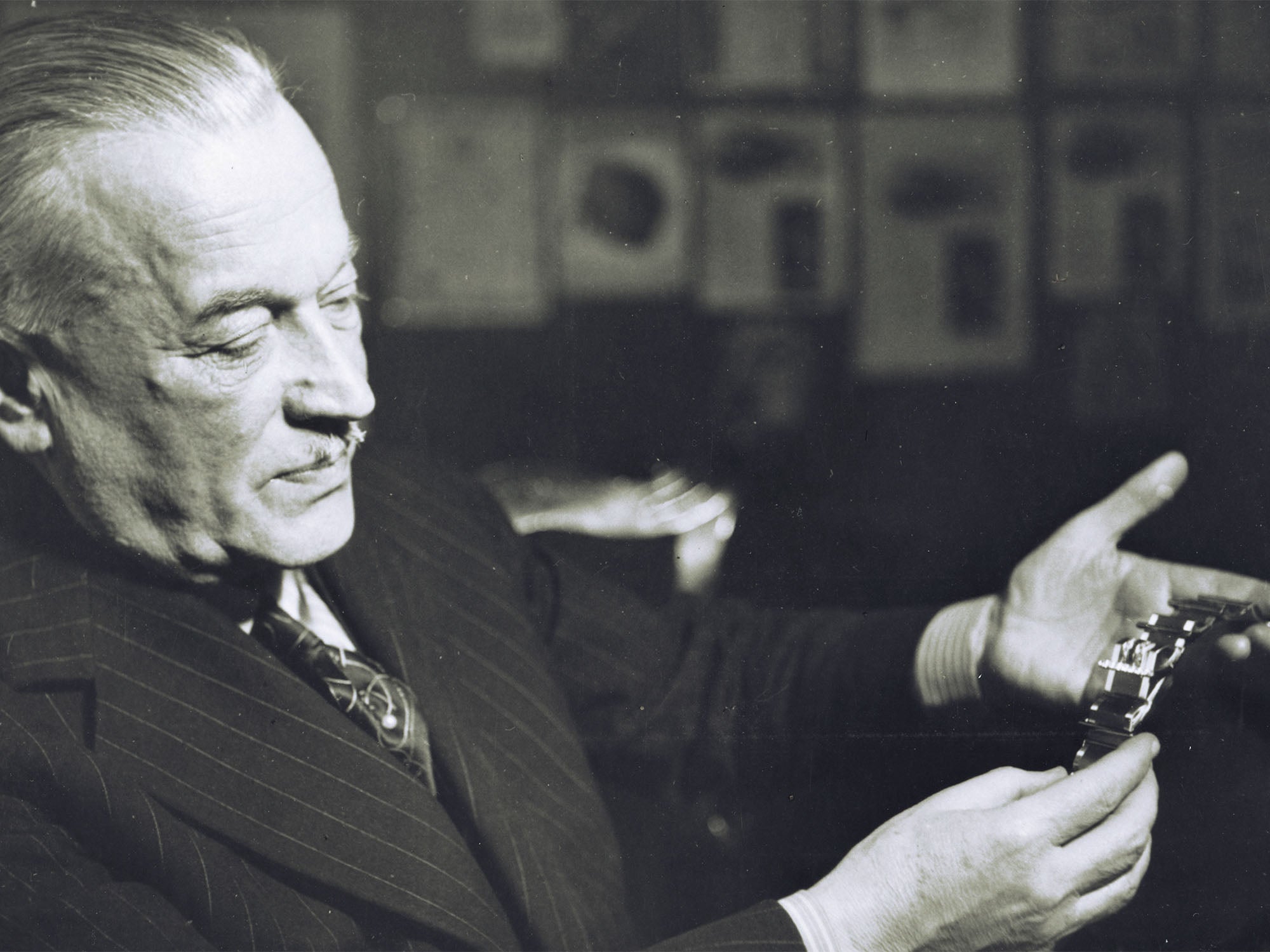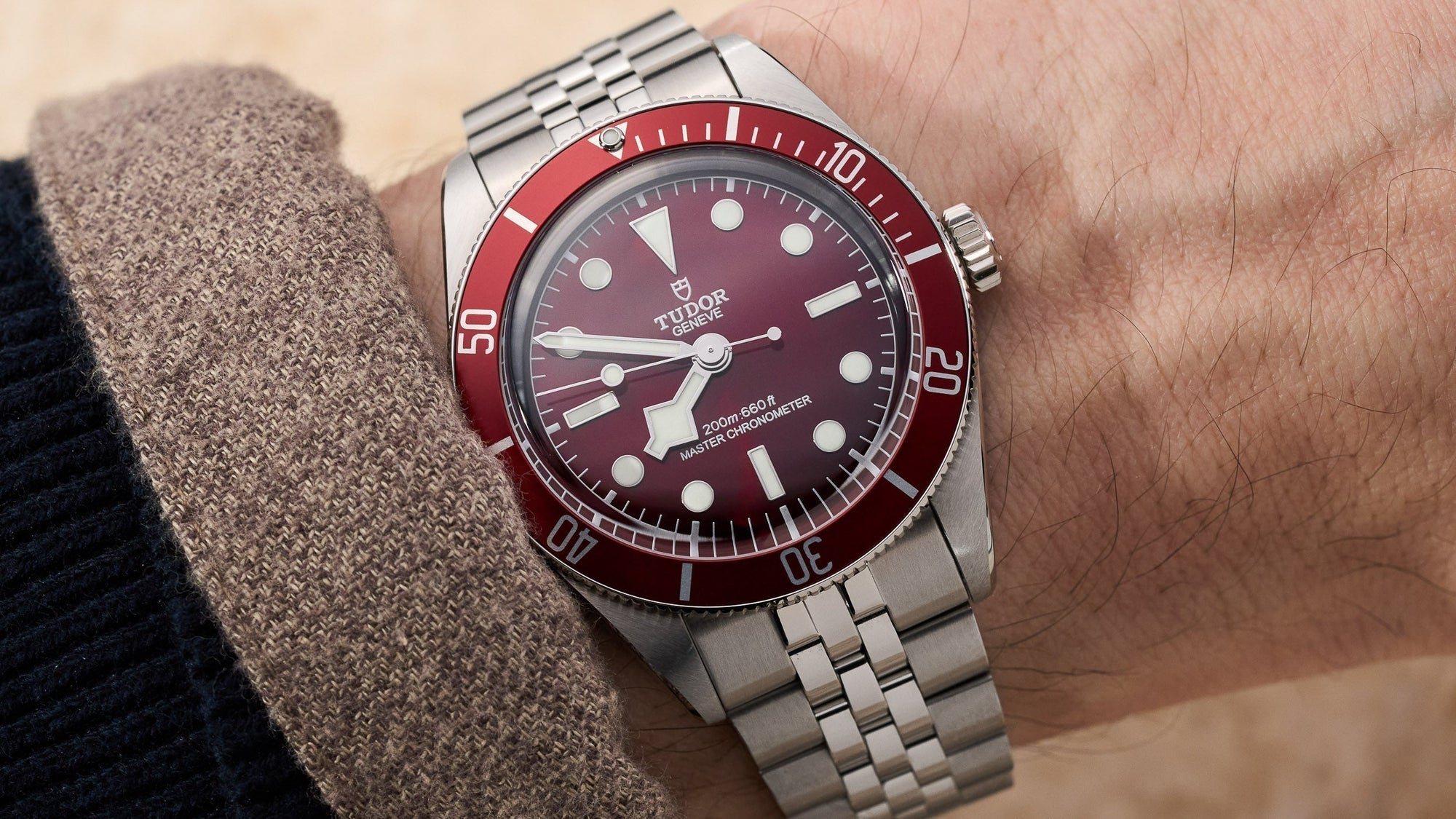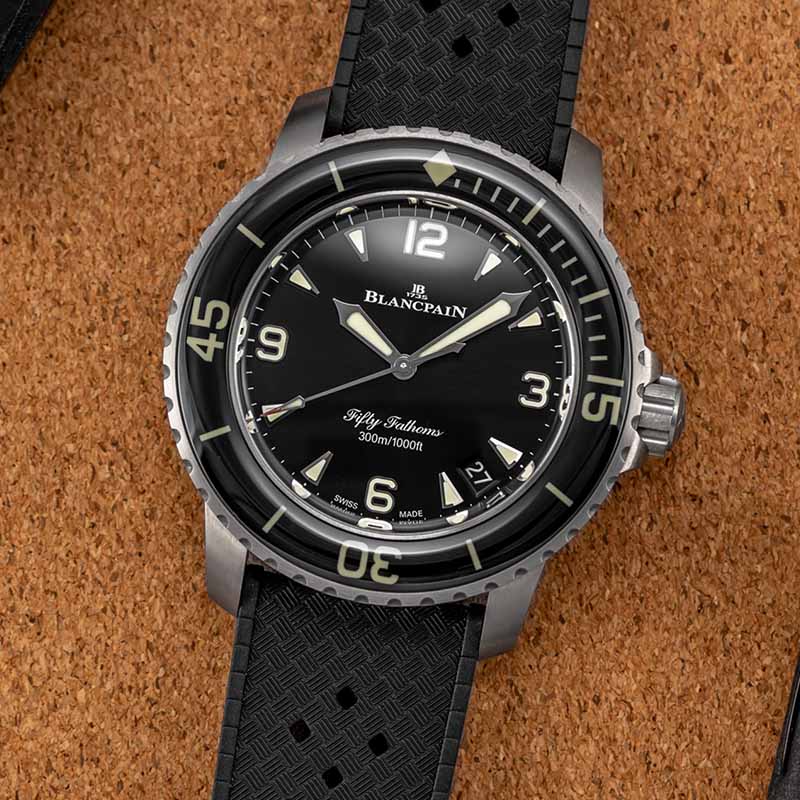Of all the watch brand head-to-head match-ups an enthusiast can debate, Tudor vs. Rolex is the tilt that would appear to be the most one-sided. Tudor is, of course, a subsidiary of Rolex, founded by the parent company with the specific mission to be not a competitor but an entry-level alternative. From its inception, Tudor has, not altogether wrongly, been regarded as a more “everyman” version of Rolex, and the latter’s now-legendary technical and design innovation have influenced its smaller sibling’s brand identity to a large degree.
However, since its heralded return to the U.S. market in 2013, Tudor has striven mightily to stand on its own, introducing popular watch models with varying levels of Rolex influence, making its own movements, experimenting with unusual materials and designs, and even partnering with watch brands not named Rolex on bold technical initiatives. In this article, we compare and contrast the important points of interest that connect the two brands and highlight what each one brings to the table.
Brand Origins and Identities

Rolex, the quintessential Swiss watch brand, was actually founded by a German in the United Kingdom. Hans Wilsdorf (above), from Kulmbach, Germany, was living in London when he partnered with another businessman, Alfred Davis, to establish Wilsdorf & Davis, the company that would become Rolex. Wilsdorf & Davis, based in London’s Hatton Garden commercial district, was founded with a mandate to make reliably precise watches at affordable prices. In 1914, days before the outbreak of World War I, Wilsdorf changed the name of the company to “Rolex” — the name coming to him out of the blue during a carriage ride, Wilsdorf later claimed — and moved its HQ to Geneva in 1919. Rolex’s offices and main manufacturing hub remain in the Canton of Geneva today, in the suburb of Plan-les-Ouates. Rolex’s early 20th-century innovations, like the waterproof Oyster case and self-winding “perpetual” movement, as well as its trendsetting designs, have impacted the whole of the watch industry and the company continues to play a leading role in luxury watchmaking today.

Even in those early days, however, Wilsdorf realized that not every potential customer could afford a Rolex. Ever the savvy marketer, he knew that offering customers a line of watches that would be affordable, while still maintaining a high level of quality, would be a key move to strengthen his business. Wilsdorf registered the Tudor brand trademark in 1926, and began running the Tudor company as a subsidiary brand of Rolex in 1946. Tudor watches were the only watches on the market at the time that featured reliable third-party movements inside the famed waterproof Rolex Oyster case — which was also developed in 1926 — and were initially more geared toward the tool watch market than were Rolex timepieces, which already enjoyed a reputation as luxury items. The brand name was drawn from the Tudor dynasty and its cultural impact on Wilsdorf’s former home of England, and Tudor watches originally bore an emblem inspired by the Tudor rose (as on the crown pictured above).
Luxury Dress Watches: Rolex Datejust and Day-Date vs. Tudor Royal collection

Rolex made history in 1945 with the release of the first Oyster Perpetual Datejust, today regarded as one of the world’s most classically elegant dress watch today, and also a model that brought two now-familiar elements to the world of watch design — one of which can be found throughout the watch industry, the other being still closely associated with Rolex. The first was the addition of a date display in a window at 3 o’clock. The second (which actually didn’t appear until 1948) was the “Cyclops” lens over said window, which magnified the date numeral by a factor of 2.5 for greater legibility at a glance. Legend has it that Wilsdorf came up with the feature after his second wife lamented to him how difficult it was for her to read the date on her watch. Apparently, the idea to add a lens to the crystal came to the founder after a droplet of water fell onto his watch’s crystal, over the date window, while he was washing his hands in the bathroom.

The Datejust begat the Day-Date, Rolex’s other famous and influential dress watch, in 1956. The latter was the first wristwatch that displayed both the date (in the now-familiar 3 o’clock position under the Cyclops lens) and the current day of the week (in a curved window above the Rolex logo at 12 o’clock). The Day-Date’s Oyster case had the hallmark fluted bezel of its predecessor, the Datejust, and contained one of Rolex’s “perpetual” self-winding movements. Starting in the 1970s, Day-Date watches were outfitted with other mechanical movements and eventually with quartz movements as part of Rolex’s “OysterQuartz” series of the late 20th Century. Today, the Day-Date comes in two sizes — one in a 36mm case like the original, the other at 40mm, aimed at larger wrists.
The Day-Date is perhaps best known for earning the nickname of “President,” starting in the 1960s when President Lyndon B. Johnson wore one regularly in office.The “President” has become a luxury badge for powerful people real and fictional: actor James Gandolfini famously sported a gold Day-Date in his role as mob chieftain Tony Soprano on the HBO series “The Sopranos.” The sturdy three-link bracelet that made its debut on the original Day-Date also bears the nickname “President” and remains reserved for Day-Date models and for certain ladies’ Datejust models.

As a brand dedicated chiefly to tool watches, Tudor hasn’t made as much of a historical splash in the dressier arena of watchmaking, but the brand does offer a line clearly inspired by the aesthetics of the Datejust and Day-Date, called Royal. Wilsdorf introduced the watch that inspired the Tudor Royal way back in 1926, and gave it the name officially in 1950. The Royal is one of Tudor’s dressier watches while still fairly “sporty-chic” in its design, with its fluted, Datejust-esque bezel and sunray-finish dial with Roman numeral hour markers. The largest iteration of the Tudor Royal, at 41mm, features a day-of-the-week display in an arched window at 12 o’clock and a small date aperture at 3 o’clock, a layout no doubt inspired by the original “President” created by Tudor’s parent brand. The movement is the ETA-based Caliber T603, with a modest but solid 38-hour power reserve.
Field Watches: Rolex Explorer vs. Tudor Ranger

The Rolex Explorer, released in the seminal year of 1953 along with the Submariner, is known chiefly as the watch that was worn by Sir Edmund Hillary and Tenzing Norgay on their historic expedition to the summit of Mount Everest that same year. In truth, the watch that Rolex actually provided for the mission was the “pre-Explorer” Ref. 6098, equipped with the automatic Caliber A296, which was never produced commercially. but the worldwide fame garnered by the successful summit provided all the marketing juice that Rolex needed for the launch of its now-famous mountaineering-themed timepiece.
The Ref. 6350 was the first “official” Rolex Explorer (much more detail on the watch and its origins can be found here), preceding the Ref. 6150 that established the classic Explorer dial layout that we’re more familiar with now: inverted triangle at 12 o’clock, numerals at 3, 6, and 9 o’clock, Mercedes-style hour hand and pencil-shaped minute hand, and bar indexes at the other hour positions. The Ref. 1016 that followed shortly thereafter is the longest-lasting of the Explorer references, and as of the most recent version in 2021, the Explorer is once again available in its original 36mm case size.

Tudor’s answer to the Explorer was a watch called the Ranger, the first edition of which was launched in 1967. The name was actually registered way back in 1929, and Tudor supplied a series of “pre-Ranger” watches, without the inscription on their dials, from 1952 to 1954 for the British North Greenland Expedition. Those models influenced the contemporary yet still very military-influenced version of the Ranger that Tudor rolled out in 2014, just a few years after its return to the U.S. market. The case dimensions were expanded from the 34mm of the vintage model to 41mm but the matte black, dateless dial with big painted numerals at 3, 6, 9, and 12 were retained, as was the domed sapphire crystal that covers it.
Tudor equipped the Heritage Ranger (whose most direct inspiration is the Ref. 7995, discontinued by 1969) with a self-winding movement sourced from ETA, the brand having not yet ramped up its own in-house movement production. This watch, officially called the Heritage Ranger, was discontinued in 2020, and replaced with the simpler named Ranger in 2023, now in a smaller 39mm case and containing an in-house movement with a 70-hour power reserve.
Sporty Divers: Rolex Submariner vs. Tudor Black Bay

Rolex invented the waterproof Oyster case in 1926 and had been using it for many of its sporty and dressy watches ever since, but it wasn’t until 1953 — there’s that year again — that its waterproof capabilities were pushed to the next level. That year, in which the popularity of Scuba diving was on the rise and watchmakers strove to fill the need for watches that could withstand deeper underwater pressures as well as track immersion times, Rolex unveiled the first Submariner, Ref. 1604 (above). The Submariner was touted as the first commercial watch that was waterproof to 100 meters — a significant claim, as the Blancpain Fifty Fathoms, which had preceded it to market, was tested only to the 91.44 meters that matched up to its name.

The first Submariner established the template: 37mm steel Oyster case, black dial with inverted triangle at 12 o’clock, alternating circle and bar indexes at the hour markers, and a rotating bidirectional bezel with a 60-minute scale that a diver could set to keep track of his time underwater. Subsequent references of the Submariner, starting with the Ref. 6205, added the familiar Mercedes handset and even more robust water-resistance ratings — 200 meters and eventually 300 meters, which is the standard for the model today. (The case sizes also grew, to a standard of 40mm to 41mm in modern models, and the movements underwent significant revamps as Rolex took most of its production in house.)
In 1979, the Submariner adopted the unidirectional diver’s bezel which Blancpain had introduced years earlier for increased security, a feature that continues to define all Submariner models. It should go without saying that the Rolex Submariner has gone on to become perhaps the most historically impactful dive watch in terms of design — not just in terms of Rolex’s little brother Tudor but of the entire watch industry.

Tudor’s earliest purpose-built dive watches, in fact, did not even bother to distance themselves much from Rolex’s models, even using the same name, “Submariner.” The first Tudor watch with the “Oyster” name followed shortly after the launch of the brand, in 1947, kicking off a long tradition of timepieces suitable for underwater adventure. The first Tudor Prince model followed in 1952, around the same time that Tudor began an R&D partnership with the French Navy (Marine Nationale), from which would emerge the brand’s first dive watch, the Oyster Prince Submariner, in 1954 — the template for today’s much more distinctive Black Bay models.

Originally called the Heritage Black Bay when it was launched in 2013, shortly after Tudor’s return to the U.S. market after a years-long hiatus, the historically inspired, sporty divers’ watch was the brand’s first big hit in this modern era. The Black Bay’s plethora of historical details were drawn from Tudor dive watches of yore, covering a wide range of eras. The original version of the Oyster Prince Submariner, Ref. 7922, used the same “Mercedes” handset found on many Rolex models and was water-resistant to 100 meters; its successor in 1958, Ref. 7924, upped this rating to 200 meters, which is still the standard for Tudor dive watches today. The latter model was nicknamed the “Big Crown” because of its extra-large 8mm winding crown. It was replaced in 1969 by Ref. 7016, whose newly designed, distinctive square-themed hands and markers earned it the nickname “Snowflake.”

The cleverly curated elements that make up the Black Bay DNA include the “snowflake” hour hand, the large screw-down “Big Crown” with vintage Tudor rose emblem, and the assortment of geometrical hour markers — round dots and rectangles, with a dominant inverted triangle at 12 o’clock — derived from Tudor Submariners from the ‘60s and ‘70s. Just over a decade or so since its debut, The Black Bay proved to be just what Tudor needed in its modern iteration: an emblematic timepiece with a distinctive appeal all its own that gave the brand its own identity beyond being a “me-too” Rolex for fans with lighter wallets. The Black Bay has, in fact, blossomed into almost a sub-brand of its own within the Tudor Portfolio, adding new families with different case sizing options, like the Black Bay 58 and Black Bay 54, along with GMT and Chronograph versions. Tudor has even used materials like bronze (as in the model above) and ceramic for Black Bay cases, options not available in Rolex's lineup. At least in this sense of product diversity, the Black Bay has the Submariner beat.
Extreme Divers: Rolex Sea-Dweller vs. Tudor Pelagos

Despite its indisputably tool-oriented origins, the Rolex Submariner quickly became a coveted luxury watch for many, especially after Sean Connery wore the watch in several early James Bond films in the 1960s. Rolex, however, was still committed to exploring even bolder frontiers of underwater utility, starting with the prototype Deepsea Special (above) in 1960, which had descended with the Bathyscaphe Trieste into the Mariana Trench and set a record with its 10,000-meter water resistance.
The first Rolex Sea-Dweller, Ref. 1665, was designed as the more extreme but still wearable version of the Submariner. It had a nearly identical design to the Sub, but from a technical standpoint was a substantial upgrade, aimed at a new breed of professional divers that plied their trade at great depths inside a pressurized diving bell, breathing a mixture of hydrogen, helium, and oxygen that sustained them for prolonged periods underwater. Its 40mm steel Oyster case boasted a water resistance rating of 500 meters (1,600 feet), substantially more robust than the Submariner’s 200-meter rating. In 1969, Rolex was able to increase the waterproof rating to 610 meters (2,000 feet) and eventually, in the modern versions, to 1,200 meters.

The truly revolutionary element that came to define the Sea-Dweller debuted on the second generation of models: a built-in helium release valve in the case, designed to automatically release built-up helium atoms from the pressurized underwater chamber in which the watch would be worn; these atoms could penetrate the watch and cause its crystal to pop free of the case. This gas-expelling device, which Rolex has patented, was the first of its type on a commercially sold watch and is the main differentiating factor between the Sea-Dweller and the Submariner, along with the former’s substantially deeper waterproofness rating. Since 1978, and the long-enduring Ref. 16660 (aka the “Triple Six”), Sea-Dweller watches have carried a depth rating of 1,220 meters, or 4,000 feet.

Since we’re doing the Tudor vs. Rolex comparison thing here, the Tudor Pelagos is to the Black Bay as the Sea-Dweller is to the Submariner. The Pelagos is in one sense a victim of the Black Bay’s runaway success: it’s regarded by most as Tudor’s other dive watch — a niche model that never garnered the enthusiast prestige or the proliferating line extensions of its more widely adored sibling. But for a diehard fanbase looking for modern deep-sea robustness as well as authentic military lineage, the Pelagos offers more than its share of appeal. At first glance, the Pelagos and Black Bay look strikingly similar to one another; not surprising, as both share the historical Oyster Prince Submariner DNA (which, of course, is substantially similar to the Rolex Submariner DNA).

The differences are in the details, both aesthetic and technical. Since its initial launch, the Pelagos case, unlike that of the Black Bay, has been made of titanium rather than steel; it is, in fact, the first titanium-cased dive watch from the Rolex brand family. The unidirectional rotating bezel of the Pelagos is equipped with a dive-scale insert made of ceramic, with luminous numerals and markers; the Black Bay divers use aluminum for this insert. The Pelagos dial features the same “snowflake” hour and minute hands as the Black Bay — a stylistic choice made at the request of the French Navy, whose members found the combo of differently shaped and sized hands made reading the time underwater easier — but uses all-rectangular indexes, rather than its sibling’s assortment of circles and rectangles, at every hour marker.
From a diving standpoint, the Pelagos is clearly the model that leans much more strongly into tool-watch territory. The titanium case is water-resistant to an impressive 500 meters, as compared to the 200 meters of nearly every Black Bay model. Both models use the Rolex Oyster case (41mm in diameter for the base Black Bay model, 42mm for the original Pelagos, though both have added other sizing options), but the Pelagos adds to the deep-sea functionality with its inclusion of the helium-release valve that Rolex developed back in the 1960s for the Sea-Dweller — another innovation that has now spread throughout the industry. In 2025, Tudor pushed the Pelagos even further (or would that be “deeper”) into Sea-Dweller territory with the release of the Pelagos Ultra (above), the first Tudor to boast a waterproof rating of 1,000 meters.
World Travelers: Rolex GMT-Master vs. Tudor Black Bay GMT

Like the Submariner that had preceded it a year earlier, the Rolex GMT-Master, introduced in 1954, was both trend-setting and genre-defining. It was the first watch capable of displaying the time in two separate time zones by means of a fourth, central 24-hour hand and a bidirectional rotating 24-hour bezel. The initials in the watch’s name signify “Greenwich Mean Time,” the system of world timekeeping based on the calculation of mean solar time from the Royal Observatory in Greenwich, London. Notably from an aviation history perspective, its dual-time functionality was an innovation devised for, and developed in cooperation with, the original watch’s intended users: pilots for Pan American Airlines, who wanted a tool watch that enabled them to track the time on long-haul and international flights in both their home city, and their flight’s destination city, anywhere in the world.
The first-generation GMT-Master, Ref. 6452, had a bezel divided into two equal sectors of red and blue, a clever and eye-catching visual shorthand to identify daytime and nighttime hours on the 24-hour scale. This red-and-blue “Pepsi” bezel would herald other popular colorways with pop-cultural nicknames, like the red-and-black “Coke” bezel in 1983, the blue-and-black “Batman” bezel in 2013, and many other iterations since. While other watchmakers, before and since the introduction of the GMT-Master, have established various ways of displaying and tracking two or more time zones, it is Rolex’s design that has proven the most impactful and enduring, and the one most emulated by other brands looking to entice world travelers. The number of bicolor 24-hour bezels out there in the watch world should be plain enough proof.

Of course, when Tudor finally decided to give its fans the dual-time version of the Black Bay that they were craving, it wasn’t going to stray far from its parent brand's icon for inspiration. The Tudor Black Bay GMT, introduced in 2018, takes the classical design of the Rolex GMT-Master and gives it a very contemporary spin that is also distinctly 21st-Century Tudor. While the Black Bay GMT owes an obvious aesthetic debt to its famous forerunner, it also fits firmly within the design language of the Black Bay, with its bezel sporting a bicolor 24-hour ring on which the wearer can read a second time zone thanks to the dial’s GMT hand.
The famous bright red-and-blue “Pepsi” bezel of Rolex’s original GMT-Master is here slightly modified to a more muted indigo-and-burgundy combo. Tudor rolled out a new movement for the Black Bay GMT’s 41mm steel case: the manufacture Caliber MT5652, which boasts an antimagnetic silicon balance spring and a “weekend-proof” (as per Tudor) 70-hour power reserve. Like all Tudor in-house movements, it carries a chronometer certification by the Swiss testing agency COSC, though Tudor proudly reminds us that its own in-house standards for precision are even stricter than COSC’s: between -2 and +4 seconds of deviation per day as opposed to the -4 and +6 permitted for the certification.
The Movements

Rolex was an early leader in the quest for timekeeping accuracy, winning numerous chronometry competitions starting 1910. In 1931, just a few years after Wilsdorf’s invention of the waterproof Oyster case, the Rolex founder’s other quest came to fruition with the development of a patented, self-winding movement with a weighted mass that served to wind the mainspring via the motion of the wearer’s arm. Because this type of movement (below) kept the watch constantly wound as long as it was being worn, it was referred to, then and now, as “Perpetual.” It wasn’t the first self-winding, or “automatic” movement in a wristwatch — that would be the one patented by British watchmaker John Harwood in 1923 — but it was a development that spurred other watch manufacturers to begin adopting the technology in their own products. Most of Rolex's most popular models today are equipped with Perpetual movements, and the movements themselves have remained on the cutting edge of horological technology.

For much of its existence, Rolex sourced its movements almost exclusively from a firm called Aegler S.A., a family business founded in 1891; the relationship between the two companies was so closely intertwined that many outsiders believed that Aegler was a subsidiary of Rolex. It wasn’t until 2004, however, that Rolex purchased the firm outright, officially naming it Rolex Bienne. (Bienne is the town in Switzerland where the factory, and many other watchmaking facilities, are located.) This merger has helped Rolex become one of the most vertically integrated watchmakers in the world — a true manufacture in the classic sense of the term.

In the 21st Century, Rolex has developed a host of technical innovations, many of them patented, like the antimagnetic blue Parachrom hairspring (above) and energy-efficient Chronergy escapement, and boosted the standard power reserve in its in-house movements to a lengthy 70 hours. In 2015, Rolex established its own standard for chronometric accuracy and reliability, the “Superlative Chronometer” certification, whose criteria include an average daily rate variation of a very precise -2/+2 seconds per day as well as a host of other attributes. Rolex watches are tested in its own laboratories in the areas of Precision (the aforementioned -2/+2 rate variation), Power Reserve (according to the stated specs), Waterproofness (10 percent extra safety margin for watches rated at 100 meters, 25 percent extra for divers’ watches rated to 300 meters and above), and Self-Winding (ensuring the perpetual rotor operates with no friction or other obstructions).

As the more affordable alternative to Rolex, Tudor had long installed off-the-rack calibers from firms like ETA inside its Oyster cases, even while Rolex itself was shifting nearly all of its movement production in-house. When Tudor eventually sought to build up its own vertical integration, it didn’t do what many would have expected — that is, utilize the resources and institutional savoir-faire of its parent company — but instead established its own atelier in Bienne. Tudor’s first in-house movement, Caliber MT5621 (the “MT” is for “Manufacture Tudor”) debuted in a now nearly forgotten, field-watch-inspired model called the North Flag in 2015.
The movement established the template for Tudor going forward: minimal decoration, matter finishing, silicon balance spring, lengthy 70-hour power reserve, and COSC chronometer certification for its robustness and accuracy. Tudor began building upon the foundation of the MT5601 almost immediately: the follow-up MT5612 added a date display and dropped its predecessor’s power-reserve indicator, the MT5402, used in the Black Bay Fifty-Eight models, downsized the movement’s overall dimensions for smaller cases; and the MT5662, detailed above, added a GMT function.

When Tudor resolved to introduce its own dedicated chronograph movement, which would debut in the first Black Bay Chronograph (above), the brand worked not with Rolex but with Breitling. Breitling’s Caliber B01, which that brand had famously debuted in 2009 as its first manufacture movement of the modern era, served as the base for Tudor Caliber MT5813, which brings to the table all the considerable attributes of the B01 — bidirectional winding, column-wheel chronograph mechanism with a vertical clutch, 70-hour power reserve in a single mainspring barrel, antimagnetic silicon balance spring — while also still being recognizably Tudor, with its industrial-look matte-surface plates and openworked rotor.
Even more recently, Tudor introduced its first Master Chronometer movements, so named for the certificates they earn from METAS, the Swiss Institute of Metrology, which measures not only precision but other factors like resistance to magnetic fields. Outside of Omega (an even bigger Rolex competitor than Breiitling), Tudor is the only watch brand to earn this certification.

Tudor vs. Rolex: Final Thoughts
To circle back to our opening statement, the competition, such as it is, of Tudor vs. Rolex isn’t really a competition in the usual sense of the word. The entry-level price for a Tudor Black Bay, for example, is around $4,500 while the cheapest Submariner will run you at least $9,500 (and very possibly, will require you to languish for a while on a waitlist), so the brands really don’t even attempt to infringe on each other’s market segment. When it comes to collectibility and record-setting performance at auction, no brand other than mighty Patek Philippe can touch Rolex or even come close, including Rolex’s feisty little brother.
However, what this comparative rundown hopefully gets across is that each brand offers its own charms, both aesthetic and technical, and the younger of the two has advantages beyond being much more attractive to a slightly less affluent watch enthusiast. Yes, many a Tudor buyer will graduate to becoming a regular Rolex customer, but today, perhaps more so than ever in the history of both brands, a seasoned Rolex collector might do well to consider adding a Tudor or two to the rotation.
























































0 Comments